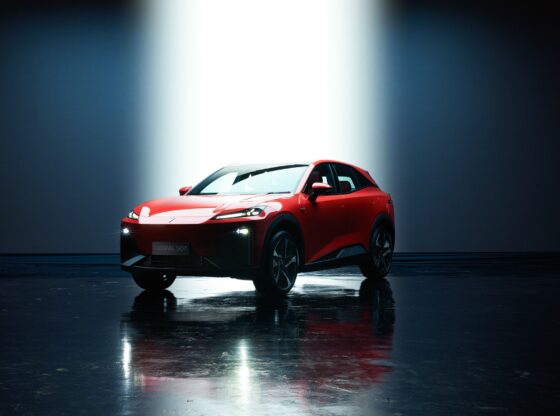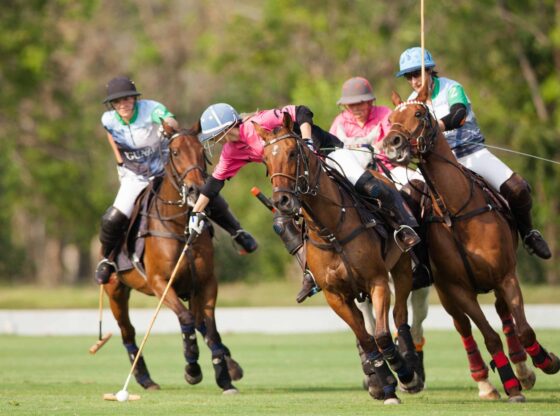![]()
From classic Astons to new Defenders, No Time To Die’s range of rides is arguably the 007 franchise’s best ever.
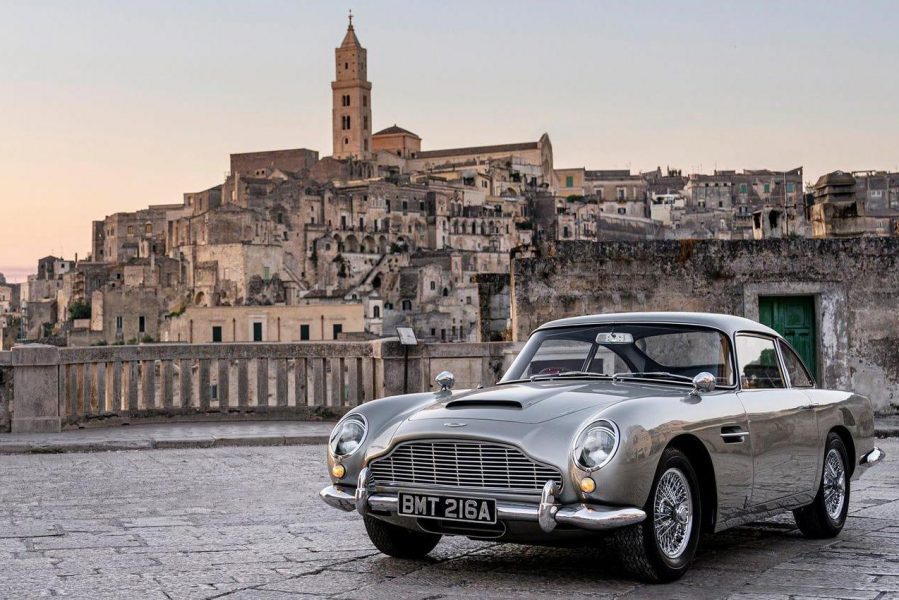
Matera was a national embarrassment for Italy in the 1950s because its Paleolithic caves were still inhabited. Now, many of them house boutique hotels and the city is a Unesco World Heritage site. But today it has a problem: a wind has whipped up and it’s coating the cobbled road that snakes through the Sassi area with a fine dust. There’s not a whole lot of grip and that makes life difficult for high-speed driving, of which there has been rather a lot.
The second unit on the new James Bond film, No Time To Die, has been here for two weeks already, shooting the pre-credit chase sequence for this intensely anticipated new film. It is the first contemporary action movie to be allowed to film in Matera (costume dramas are less needy), a negotiation that took nine months and saw the production crew cover critical sections of the ancient walls in protective metal plate cloaked in plasterboard.
The Bond operation is part invading army, part family. One of the longest-running, most lucrative film franchises in entertainment history also attracts the best people, with a hard-won knack for problem-solving and improvisation. Lead stunt coordinator Lee Morrison figured out that dousing a tricky surface with fizzy drink would improve traction while he was doubling for Matt Damon during a rooftop bike chase in The Bourne Ultimatum. “Rooftop riding is slippery. A foot chase in a hospital is difficult too. And American shopping malls,” he tells me.
The sugar is working on Matera’s stone, too, as we stand overlooking a piazza the crew have anointed “Doughnut Square”. It’s obviously not its official name, but it describes what Bond does in his Aston Martin DB5 moments after being cornered by a phalanx of bad guys and T-boned by a Range Rover. We watch them spray 007 with gunfire in a relentless fusillade. His reply is authentically, deeply Bond and will make you smile. The attention to detail in this scene is off the scale; it takes three hours to set up for a POV shot that’ll be intercut on-screen with a few other angles for maybe five seconds. But those gunshots echo down the years.
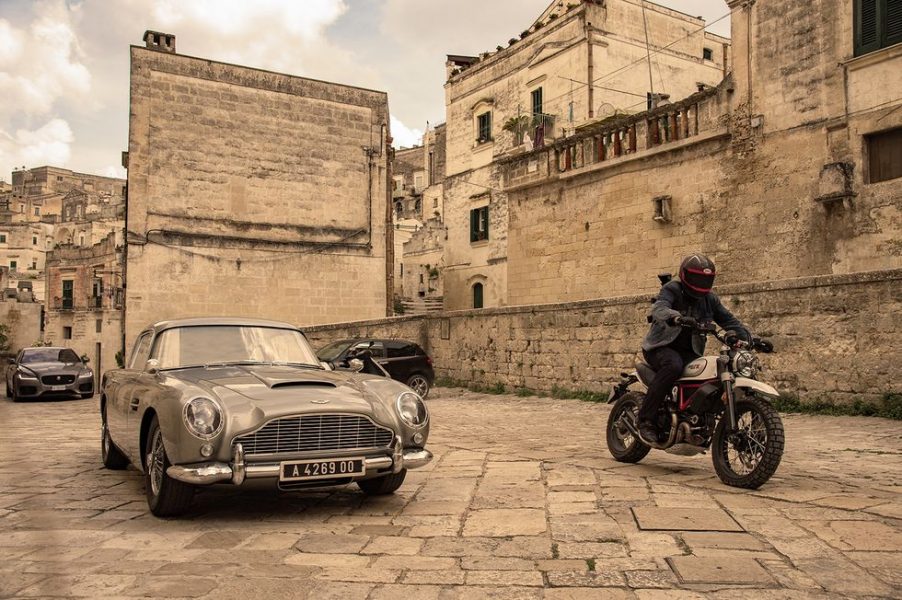

In a series that inspires feverish devotion among men and women who really should know better, the DB5 is the ultimate crowd-pleasing callback. And get this: Daniel Craig himself is behind the wheel, with Léa Seydoux beside him (above). The man likes to drive and he knows what he’s doing. Not that he freely admits to it. “You know we fake it, don’t you?” he tells me a few weeks later. “The only person who didn’t fake it was Steve McQueen. But I was allowed to doughnut the DB5 in Matera, which was great. I’m lucky to have access to a brilliant bunch of experts who take me out and we talk about it. We talk about the correct body language behind the wheel, but often when you’re with really good drivers they don’t actually put a lot of input in. They’re also usually three inches away from the steering wheel and that’s just not very cinematic. Rally drivers are practically on top of the wheel. [Pause.] Look cool: that’s all you can try to do…”
You’ve got to say Craig’s nailed that. But then, like the Massimo Alba suits he wears in the film, a DB5 helps. Aston’s svelte coupé (also wearing an Italian suit – it was designed by Milanese coachbuilder Touring) first appeared in 1964’s Goldfinger, then again in the following year’s Thunderball. It has defied the odds and 56 years of technological development to become not just the Bond car, but also the most famous car in the world. Sure, there were cameo appearances in other Bond films, but No Time To Die’s director, Cary Fukunaga, insisted on having the DB5 back in pole position.
It’s not alone: fellow double-0 agent Nomi, played by Lashana Lynch, gets a shiny, new DBS Superleggera; Bond dusts off another classic, the Aston Martin V8, last seen in 1987’s under-appreciated The Living Daylights, and the still-under-development Valhalla supercar has a brief scene. Meanwhile, the all-new Land Rover Defender features in an epic chase set in Norway, which, Morrison tells me, is the toughest ever devised for a Bond film. “These sequences are story-driven,” he says. “The Norway chase is pivotal for Bond.” Elsewhere is a retinue of Jaguar XFs, an I-Pace and a handful of Range Rover Sport SVRs, several of which get absolutely trashed. In all, Jaguar Land Rover supplied 44 cars.
But it’s the DB5 that provides the automotive through line and really raises the heart rate. The one in the film is even more special than it looks. Well, I say “one”. Through an archway on Doughnut Square and past a trestle table the film’s armourers have covered with a load of semiautomatic rifles, we find six of the eight DB5s that have been constructed for the film by Aston Martin, in collaboration with long-standing Bond special effects supervisor Chris Corbould and his car specialist, Neil Layton. They look identical to the original but use a bespoke chassis, are clothed in carbon-fibre body panels and are powered by a contemporary six-cylinder engine good for 360bhp. They were all shaken down by endurance racing driver Darren Turner before being sent into duty.
Engineers often talk about fitness for purpose; rarely has this been more apposite. Each of the octet has been set up specifically for different parts of the film’s chase and, on closer inspection, have more in common with a world rally car than a 1960s GT. The DB5 that got smacked by the Range Rover has a metal bar reinforcing its body side, another has a trick suspension configured to tackle steps and jumps and they’re all fitted with hydraulic handbrakes, roll cages and camera-mounting points.
Then there’s the car with the pod mounted on the roof, its steering rack extended so that a stuntman can do the showbiz showboating and the actor gets to play the hero with impunity beneath. Corbould tells me his team have now developed a pod car that works by remote control from a range of 500 metres. But, for now, there’s still a human on board and the main man on Bond is former British rally champion Mark Higgins. This is a guy who can make a car dance. But, as Morrison tells me, the skill set a stunt driver needs to possess goes way beyond being able to drift a car.
“You have to be extremely precise, to understand what the camera is doing and understand what you’re trying to get across,” he explains. “These guys have got four seconds to tell a story that’s happening throughout the whole film. So they’ve got to attack that certain shot as if it’s the last thing they’re ever going to do. No one arrives with that ability fully formed. Mark has learnt all that and he’s up there now with the best film stunt drivers in the world.”
Higgins has worked on Bond since 2008’s Quantum Of Solace, during which he recalls arriving on set as a newbie to see a crew member wielding a sledgehammer and beating seven shades of shit out of three Aston Martin DBSs. Such is the madness of moviemaking. It was Higgins who delivered the epic nocturnal power slide in front of the Vatican in 2015’s Spectre. But what looks good on camera doesn’t always feel that way behind the wheel. “What they’re looking for and what you think is cool can be totally different,” Higgins explains. “It’s about what the camera wants to see. You have to make it look real; it has to be almost a bit scrappy. Bond is under pressure, so it has to be less fluid.
“It’s a very different pressure, because there are 200 people out there,” he continues. “Repeatability is very important – and hitting marks. It’s totally different to competing, but it’s still a buzz, especially when you’re doing the big scenes. It’s a massive team operation. I might be doing my little handbrake number up here, but somebody else is doing a big pipe ramp stunt behind me and if I make a mess of my handbrake, then that’s a £20,000 shot that’s potentially gone down the drain. Everyone has to do their bit, especially when you’re writing cars off or blowing them up. [Pause.] And it’s dangerous.”
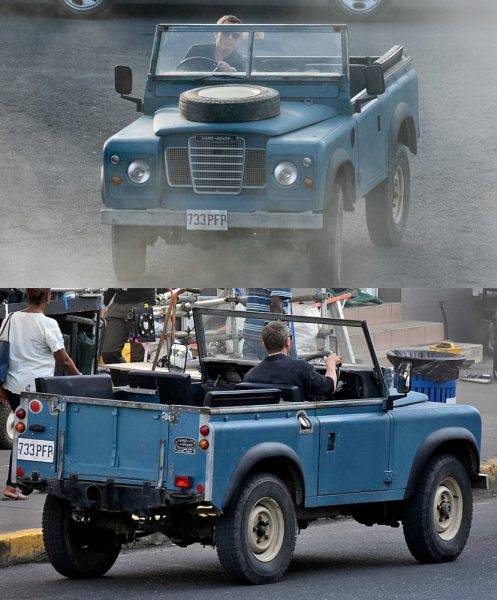
He also gets to wear the dinner jacket and suit, but today his face is covered in fetching black dots, part of the motion capture technology that will see his visage replaced by Daniel Craig’s in post-production, a man he holds in high regard as a driving protégé, it turns out. “I can tell him which way the wheel goes and which way to lean – it totally sells it. That’s why the pod’s great, because the wheel is moving as it should do. There’s a clutch on it so it won’t get ripped out of the actor’s hands and it can’t affect what I’m doing up above. And Daniel can drive, anyway. He enjoys all that. And we obviously can’t act very well, so he does that job for us.”
For Bond geeks – and there are millions of them – the background detail is another object of obsession. In excess of 140 vehicles were prepped by Layton’s team for No Time To Die and in Matera the DB5 is flanked not just by gun-toting henchmen in Jaguar XFs, but there’s also a 1996 Maserati Quattroporte and a 2004 Lancia Thesis, a pair of sharky-looking and rather obscure Italian saloons that are expertly cast given the context. These, too, will have been fitted with small-capacity stunt fuel tanks, hydraulic handbrakes and fire-suppression systems. They’ll have had their safety and stability systems deactivated and even their brake lights switched off, a job which means rewriting software code on newer cars or grappling with tricky electronics on the older ones.
No stone is left unturned. Even the ones covered in fizzy drink.






